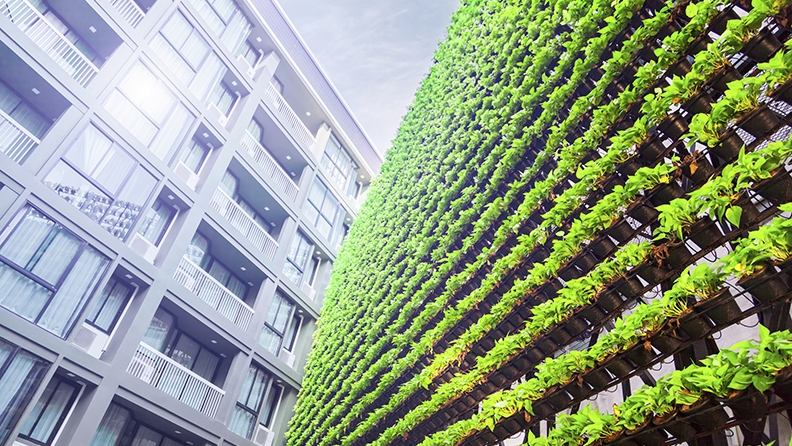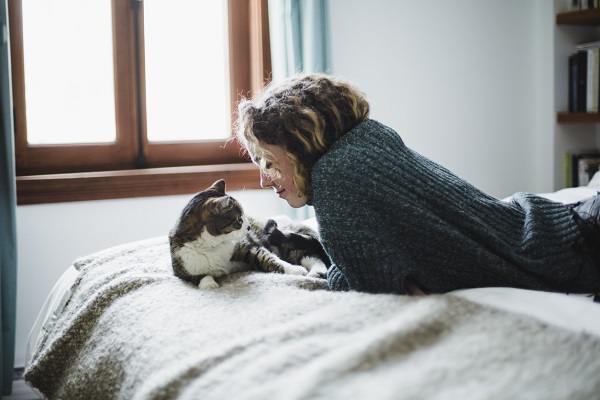-
The urbanisation of society has brought with it plenty of benefits, but one downside is less time spent in natural surrounds.
Inspired to bring more greenery back into city life, 202020 Vision is a collaborative network of organisations working to increase urban green space by 20%, by 2020.
The link between urban greening and mental heath is one key area of interest for this network. We asked Queensland Associate Professor Richard Fuller, an expert in this field, to share some insights.
What work is being done in the space of urban greening and wellbeing?
There is mounting concern that as more and more of us live in cities, we are becoming separated from experiences of nature. We are studying what the consequences of this might be for human health and wellbeing, and also the extent to which people are concerned about conservation and environmental protection. How can we protect what we don’t love? How can we love what we don’t know?
"Our recent study found that if everyone visited urban green spaces for 30 minutes per week, the prevalence of depression could be reduced by 7%."
When it comes to making real progress towards this, who ultimately needs to be involved?
Two main sets of players. First, there needs to be effective top-down planning. We need to keep our cities green, and make them greener where possible. But we need to do this without unnecessarily extending their overall footprint, which can eat into important habitats for plants and animals beyond the current city edge. This requires careful urban planning and excellent and innovative landscape architecture.
Second, we can all play our part. We recently did a study that showed having lots of green space nearby didn’t necessarily mean a person was more likely to spend time in it. Despite the huge benefits of visiting green spaces, 40% of Brisbane residents don’t do it at all in the average week. Simply providing green space is necessary, but not sufficient to get us out there experiencing it. Programs aimed at helping us get out into nature are crucial.
From a health perspective, why should greener cities be a goal?
Scientists have demonstrated a huge range of health benefits from green spaces and other vegetation in cities. One classic study – a 1984 analysis of surgical patients in a Pennsylvanian hospital – found that those with a view of trees from their bed spent less time in hospital, required fewer strong painkillers, and had fewer post-surgical complications than those whose rooms faced a brick wall.
More recently, work in the United Kingdom and the Netherlands has shown that people living near green spaces have lower mortality from cardiovascular disease than those further away. This could be because green space encourages physical activity and reduces stress responses.
Other reported health benefits include lower blood pressure, faster healing and less depression. Our recent study in Brisbane has shown that if everyone visited urban green spaces for 30 minutes per week, the prevalence of depression could be reduced by 7% and high blood pressure by 9%.
Time spent in nature is also good for cognitive function. One study found that participants who walked through an arboretum performed a mental test markedly better than those who walked on a busy street. The task was repeating a spoken sequence of numbers in reverse order. According to attention restoration theory, time in nature restores our mental capacity by demanding less ‘directed attention’.
What are the challenges we face in making this a reality?
We still lack some key pieces of scientific information, such as what elements of nature are most important in delivering health and wellbeing benefits, but ultimately the key challenge is in planning, design and human behavioural change.
Find out more about the 202020Vision network’s goals and achievements.
Can urban greening make us happier and healthier?

-
How is ‘phubbing’ hurting your relationships?
Here’s how to stop phubbing and be more mindful of your phone habits, to help improve face to face interactions with your family and friends.
-
Are the winter blues real?
Simple ways to boost your mood in winter.
-
Mental fitness explained
Just as you work to strengthen your body, your mental health deserves attention and exercise too.
-
Signs it's time to visit the dentist
Nobody wants to go. But there are good reasons to – promise.
-
The link between stress, anxiety and jaw pain
Physiotherapist Michael Chan explains how stress and anxiety can cause jaw pain, and how to help get some relief.
-
When you can't sleep next to your partner
You love everything about them – except their sleep habits.
Subscribe to receive the best from Live Better every week. Healthy recipes, exercise tips and activities, offers and promotions – everything to help you eat, move and feel better.
By clicking sign up I understand and agree to Medibank's privacy policy





.jpg)
